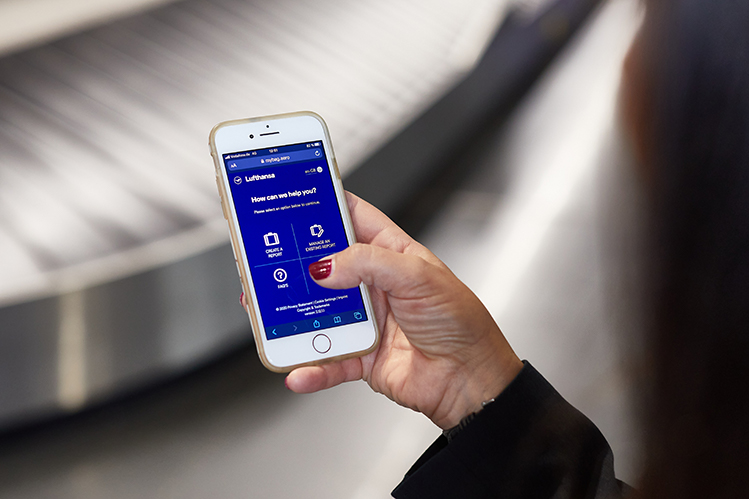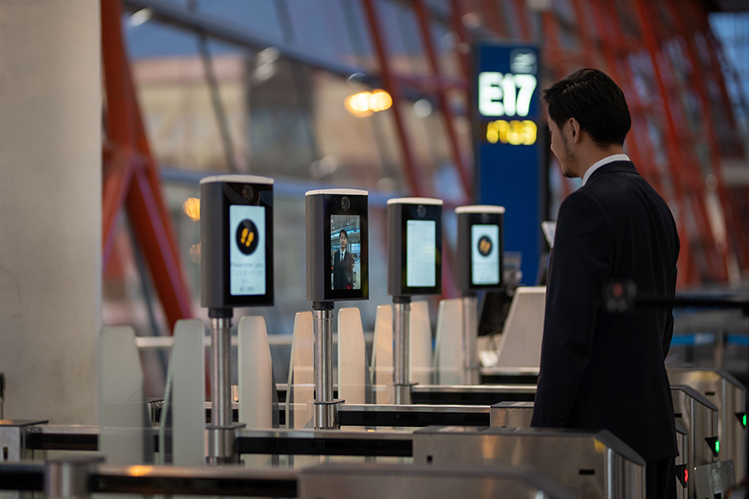SITA is a Gold Sponsor of this year’s ACI EUROPE Annual Assembly & Congress. Ahead of the event, Sergio Colella, SITA President for Europe, was interviewed by Ross Falconer.
Early this year SITA published the Runway for Future Operations paper, which summarises the challenges the air transport industry faces in responding to COVID-19 and how priorities have sharply shifted within the space of a few weeks. It outlines how SITA is evolving its portfolio to provide the industry with innovative technology solutions that meet the new health requirements and support the industry recovery.
“For example, we see a focused shift from immediate actions like masks and hand sanitizers to longer-term and more sustainable solutions such as contactless passenger processing,” begins Sergio Colella, SITA President for Europe. “Also, automation of operations will play an important role in reducing queues and touchpoints at the airport as passenger volumes begin to recover and social distancing becomes increasingly difficult.”
For many airports, the solutions SITA provides are bolt-on solutions to existing technologies and platforms that offer longevity and cost-efficiency benefits beyond addressing the immediate COVID-19 challenges.
Colella explains that, overall, SITA’s response is broken down into three key areas:
Enabling passengers to be ready to fly before the airport: “Travel authorisation, bag-drop, check in and more can be facilitated away from the airport to reduce passenger queuing and to enable more social distancing. This means passengers can arrive checked-in and ‘ready to fly’. Health ETAs (Electronic Travel Authorisation) help further speed up the process. For example, SITA uses biometrically-enabled, secure mobile technology which allows governments to instantly check digital health declarations or information before passengers travel – minimising hassle and queuing at airports.”
Enabling safer, easier passage through the airport: “A contactless journey through the airport is crucial to reducing the risk of COVID-19 infection. Biometrics allow passengers to use their face as their passport and identification. Similarly, passengers are now able to use their ‘mobile as a remote control for travel’. Touchless bag tagging and digital boarding are just some of the examples of how we can minimise the need for passengers to touch airport infrastructure or physically contact staff.”
Safer on arrival and beyond: “Processing passengers via biometric-enabled gates or traditional border checkpoints is faster than ever and completely touchless, further reducing the time of exposure in the airport, congestion levels and contact points. Passengers can also receive personal notifications advising bag arrival location and times, to help avoid clustering in the baggage arrivals hall. And, in the unfortunate event of a delayed bag, they can use mobile lost bag reporting to check the progress of these bags and stay in touch with their airline.”

Sergio Colella, SITA President for Europe: “We see a focused shift from immediate actions like masks and hand sanitizers to longer-term and more sustainable solutions such as contactless passenger processing. Also, automation of operations will play an important role in reducing queues and touchpoints at the airport as passenger volumes begin to recover and social distancing becomes increasingly difficult.”
Accelerating the existing trend to automation
SITA believes the future is mobile, where each step in the journey can be managed by using passengers’ own smart devices, from checking-in a bag to boarding.
“We have designed our next generation of integrated common-use and digital identity platforms to make this possible across the passenger journey,” says Colella. “Mobility puts passengers back in control, while minimising the need for infrastructure with its associated costs and, importantly, the health risks of being in physical contact with touchpoints that everyone else uses.”
The other key element in making the passenger experience frictionless and low-touch is the use of biometrics at every relevant touchpoint. SITA’s Smart Path addresses all at airport touchpoints to make the passenger journey a near walk-through, low-touch experience where you face becomes your passport.
Solutions that automate operations offer longevity and cost-efficiency benefits beyond addressing current COVID-19 challenges. “This is something we at SITA have considered in depth,” Colella explains. “We realised early on that passengers wanted reassurance about the safety of air travel before returning to the skies, while the industry was focused on meeting new health requirements aimed at keeping passengers and employees safe. We also acknowledged, given the impact of the global lockdown on airlines and airports, there was little appetite for major new infrastructure investment. Lastly, it was important to ensure we could deliver as soon as possible, in order to get flights back into the sky.”
SITA, therefore, focused its solutions on accelerating the existing trend to automation, as well as leveraging existing common-use equipment such as self-bag drop and self-boarding gates. “This would ensure we could respond quickly with an efficient solution that could be used long beyond the current requirements,” Colella notes. “Having said that, I do believe that the health measures introduced in the past few months will be here to stay and will become part of the overall safety and security requirements.”
This approach has already proven to be successful. In the few months since the start of the pandemic, SITA has helped airports around the world to quickly comply with new health regulations using biometrics or mobile devices as a remote control for travel.
“We have rolled out touchless kiosks and self-bag drop in airports such as Los Angeles, Dallas Fort-Worth and Hamad International in Doha, a mobile solution to report delayed baggage with Lufthansa, and a touchless biometric solution at Beijing Capital International Airport,” says Colella.
A contactless, mobile way to report and track delayed baggage

SITA has helped Lufthansa Group deliver a contactless, mobile way to report and track delayed baggage with WorldTracer Self Service. SITA’s initial trials showed that the service has already proved to be popular with travellers, with two-thirds opting to use this service instead of visiting a baggage counter.
SITA has helped Lufthansa Group deliver a contactless, mobile way to report and track delayed baggage with WorldTracer® Self Service. SITA’s initial trials showed that the service has already proved to be popular with travellers, with two-thirds opting to use this service instead of visiting a baggage counter.
“In addition to meeting new COVID-19 hygiene requirements, WorldTracer Self Service saves airlines on average $10 for every mishandled bag reported by eliminating the need for additional infrastructure to manage the reporting of delayed bags,” Colella explains.
The latest figures from the 2020 SITA Baggage Report show that, while the number of mishandled bags across the industry tumbled 45.8% from 46.9 million in 2007 to 25.4 million in 2019, the cost to the industry was still $2.5 billion last year. “Therefore, despite a major reduction in the number of mishandled baggage globally, managing these bags remains a major cost to airlines,” says Colella.
Following the successful launch at Munich Airport, Lufthansa has now deployed WorldTracer Self Service at Frankfurt Airport and it will be rolled out worldwide over the next few months. The service will also soon be available to all SWISS and Austrian Airlines passengers. “We are in discussion with several airlines to introduce this across other airports globally,” Colella adds.
SITA Smart Path: a near walk-through airport experience
Beijing Capital International Airport (BCIA) is realising a near walk-through airport experience by using SITA’s biometrics self-service and mobile-enabled platform, SITA Smart Path, at checkpoints across the journey. The scale at BCIA is impressive, with over 600 biometric checkpoints, including 250 lanes of automatic gates, 80 kiosks, and 30 self-bag drop stations, which will process passengers from international flights.
“The key benefits for Smart Path are the speed and the improvement to the passenger experience,” says Colella. “For example, the airport can process over 400 passengers boarding an Airbus A380 in fewer than 20 minutes. We have also found that, wherever we have introduced Smart Path, upwards of 90% of passengers elected to use their biometric rather than a traditional face-to-face interaction.”
While Beijing is the most comprehensive of SITA’s Smart Path deployments, it has implemented or trialled Smart Path at airports across the world, including Hamad International (Qatar), Muscat (Oman), Orlando and Miami in the US, Athens (Greece) in Europe, and several others.

Beijing Capital International Airport is realising a near walk-through airport experience by using SITA’s biometrics self-service and mobile-enabled platform, SITA Smart Path, at checkpoints across the journey.
“In adversity there is opportunity”
Looking ahead to this year’s ACI EUROPE Annual Assembly & Congress, where SITA is a Gold Sponsor, Colella highlights that the COVID-19 pandemic has had a devastating impact on the industry. “However, through this crisis there is the possibility to reimagine the passenger journey to be faster, more effective and automated. There is also the ability to rethink how we operate our airports and airlines in a way that is more efficient. Today, we all – airlines, governments, airports – face the same challenge: how do we get our industry back on its feet and our airlines flying again. Let’s use this spirit of cooperation to drive the changes we have not been able to make in the past. In adversity there is opportunity.”







